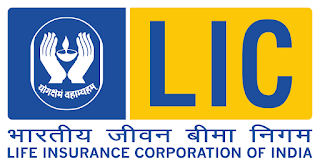
It is indispensable to have an elaborate and systematic plan of action before embarking upon any adventure. With success in our minds, Mahendra Guru is providing you the sure-footed tips and strategies to crack LIC AAO exam.
ENGLISH
1. Solve 3-5 previous year papers to find out your strength and concentrate on your strengths.
2. Read the headlines, sub-headings, and photo captions on Page 1, National, International, Sports, and Business pages followed by letters to the editor in the editorial section. Try to analyse what you read. Take help from e-newsportal.
3. Put special emphasis on Verb, Tense, Preposition and Conjunction. Read stories in English in your free time. Take help from our Digi pages and Digi notes.
4. A reading comprehension can be based on Political, Financial and Social topics. So, prepare for all possible contingencies.
General Awareness
1. Refer to the official website of LIC, IRDAI for history, features, and updates.
2. Refer to the DIGI NOTES regularly for 360-degree coverage of the current events.
3. Have a layman view of the Static G.K. by referring to the miscellaneous section of Mahendra's General Awareness book.
4. Always go through the previous LIC Sample papers.
5. Lastly, understand the concept behind such an examination. They want to check your awareness along with your interest in insurance, so always understand the basics and the level of paper beforehand.
Computer
1. Computer section has more importance because this is the only section that can be attempted quickly and good marks can be scored.
2. This section will have 30 questions and each carries two marks. Therefore, it is a high-scoring section.
3. In this section, questions can be related to IPOS, Memory Measurement Unit, Generations of Computer, basic knowledge of MS-Word and Excel, Internet, network classification, some devices used in network, file extension, malwares, and computer abbreviations.
Quantitative Aptitude
1. Focus on the questions given in bunch. For example- Simplification, Number Series, Data Interpretation, Inequality and Data sufficiency.
2. Time management is an important key to get success so stay to the point while solving word problems.
3. Data interpretation (Puzzles) should be solved by taking line wise referential approach. Try to extract the data according to the need and compile it properly.
4. Allocate a minimum of 5 to 7-minute time for a particular D.I. and try to work efficiently on calculations. This efficiency can be increased by practising on regular basis.
5. Online Speed Test is the best tool for the development of speed and accuracy.
6. Simplification seems to be tough but it is based on calculations, so try to solve it with speed.
7. Avoid the use of paper and pen while doing practice and try to solve questions mentally, which will increase your working efficiency in the examination hall.
8. Do not use any calculation device while practising.
9. Approximately, time of 25 minutes should be given for quantitative aptitude.
10. Read the questions carefully and stay calm while giving the exam. This will also help in working efficiently and accurately.
11. Following the above tips will help the aspirants to achieve their target.
Reasoning
1. A candidate should focus on bulk questions like machine input, syllogisms, sitting arrangement, inequality, puzzle, data sufficiency, etc., then he/she should focus on one-mark questions.
2. Data sufficiency can be improved by reading and observation skill rather than pen or paper
3. A candidate should shortlist the questions
4. Strong sections should be targeted first.
5. Time and accuracy matters the most
6. The ideas regarding questions are like this:
SYLLOGISMS-5
INEQUALITY-5
SITTING ARRANGEMENT-5
PUZZLES-5
DATA SUFFICIENCY/CODING AND DECODING-5
MACHINE INPUT/MISCELLANEOUS-5




.jpg)